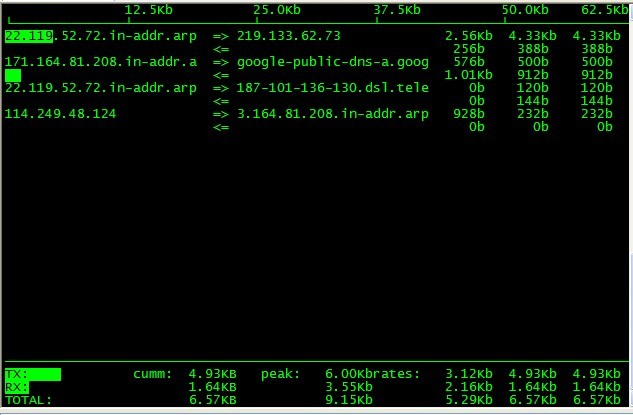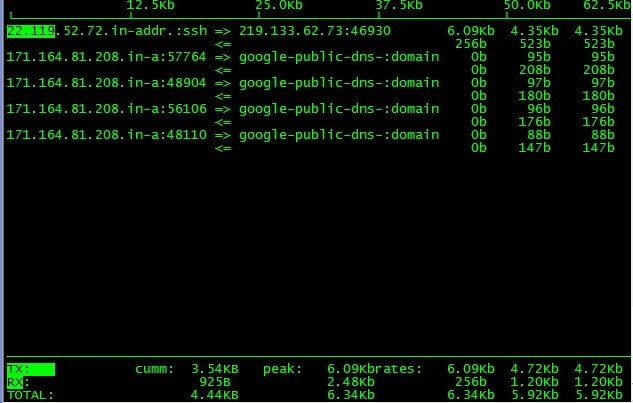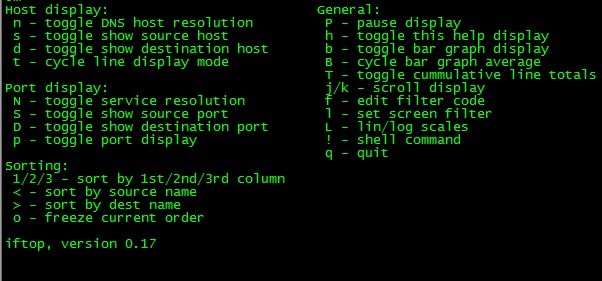在我们所使用的系统当中,使用sh调用执行脚本,相当于打开了bash的POSIX标准模式 (等效于bash的 --posix 参数)
一般的,sh是bash的“子集” (不是子集的部分,具体区别见下的“Things sh has that bash does not”)
例子:
[wwy@sf-watch test]$ cat t2.sh
#!/bin/bash
diff <(echo xxx) <(echo yyy) # 此语法包含bash的特性,不属于sh的POSIX标准
[wwy@sf-watch test]$ bash -x ./t2.sh # 使用bash 调用,不会出问题
+ diff /dev/fd/63 /dev/fd/62
++ echo xxx
++ echo yyy
1c1
< xxx
---
> yyy
[wwy@sf-watch test]$ sh ./t2.sh # 而用sh调用,报错如下
./t2.sh: line 3: syntax error near unexpected token `('
./t2.sh: line 3: `diff <(echo xxx) <(echo yyy)'
[wwy@sf-watch test]$ echo $?
2
但是,在我们的linux系统中,sh是bash的一个软链接:
[wangweiyu@ComSeOp mon]$ which sh
/bin/sh
[wangweiyu@ComSeOp mon]$ ls -l /bin/sh
lrwxrwxrwx 1 root root 4 Mar 21 2007 /bin/sh -> bash
那为什么上面的例子中还会出现问题呢?原因在于: bash程序执行,当“$0”是“sh”的时候, 则要求下面的代码遵循一定的规范,当不符合规范的语法存在时,则会报错, 所以可以这样理解, “sh”并不是一个程序,而是一种标准(POSIX), 这种标准,在一定程度上保证了脚本的跨系统性(跨UNIX系统)
下面的内容详细的说明了bash与sh在语法等方面的具体差异:
Things bash has that sh does not:
long invocation options
[+-]O invocation option
-l invocation option
`!' reserved word to invert pipeline return value
`time' reserved word to time pipelines and shell builtins
the `function' reserved word
the `select' compound command and reserved word
arithmetic for command: for ((expr1 ; expr2; expr3 )); do list; done
new $'...' and $"..." quoting
the $(...) form of command substitution
the $(<filename) form of command substitution, equivalent to
$(cat filename)
the ${#param} parameter value length operator
the ${!param} indirect parameter expansion operator
the ${!param*} prefix expansion operator
the ${param:offset[:length]} parameter substring operator
the ${param/pat[/string]} parameter pattern substitution operator
expansions to perform substring removal (${p%[%]w}, ${p#[#]w})
expansion of positional parameters beyond $9 with ${num}
variables: BASH, BASH_VERSION, BASH_VERSINFO, UID, EUID, REPLY,
TIMEFORMAT, PPID, PWD, OLDPWD, SHLVL, RANDOM, SECONDS,
LINENO, HISTCMD, HOSTTYPE, OSTYPE, MACHTYPE, HOSTNAME,
ENV, PS3, PS4, DIRSTACK, PIPESTATUS, HISTSIZE, HISTFILE,
HISTFILESIZE, HISTCONTROL, HISTIGNORE, GLOBIGNORE, GROUPS,
PROMPT_COMMAND, FCEDIT, FIGNORE, IGNOREEOF, INPUTRC,
SHELLOPTS, OPTERR, HOSTFILE, TMOUT, FUNCNAME, histchars,
auto_resume
DEBUG trap
ERR trap
variable arrays with new compound assignment syntax
redirections: <>, &>, >|, <<<, [n]<&word-, [n]>&word-
prompt string special char translation and variable expansion
auto-export of variables in initial environment
command search finds functions before builtins
bash return builtin will exit a file sourced with `.'
builtins: cd -/-L/-P, exec -l/-c/-a, echo -e/-E, hash -d/-l/-p/-t.
export -n/-f/-p/name=value, pwd -L/-P,
read -e/-p/-a/-t/-n/-d/-s/-u,
readonly -a/-f/name=value, trap -l, set +o,
set -b/-m/-o option/-h/-p/-B/-C/-H/-P,
unset -f/-v, ulimit -i/-m/-p/-q/-u/-x,
type -a/-p/-t/-f/-P, suspend -f, kill -n,
test -o optname/s1 == s2/s1 < s2/s1 > s2/-nt/-ot/-ef/-O/-G/-S
bash reads ~/.bashrc for interactive shells, $ENV for non-interactive
bash restricted shell mode is more extensive
bash allows functions and variables with the same name
brace expansion
tilde expansion
arithmetic expansion with $((...)) and `let' builtin
the `[[...]]' extended conditional command
process substitution
aliases and alias/unalias builtins
local variables in functions and `local' builtin
readline and command-line editing with programmable completion
command history and history/fc builtins
csh-like history expansion
other new bash builtins: bind, command, compgen, complete, builtin,
declare/typeset, dirs, enable, fc, help,
history, logout, popd, pushd, disown, shopt,
printf
exported functions
filename generation when using output redirection (command >a*)
POSIX.2-style globbing character classes
POSIX.2-style globbing equivalence classes
POSIX.2-style globbing collating symbols
egrep-like extended pattern matching operators
case-insensitive pattern matching and globbing
variable assignments preceding commands affect only that command,
even for builtins and functions
posix mode and strict posix conformance
redirection to /dev/fd/N, /dev/stdin, /dev/stdout, /dev/stderr,
/dev/tcp/host/port, /dev/udp/host/port
debugger support, including `caller' builtin and new variables
RETURN trap
the `+=' assignment operator
Things sh has that bash does not:
uses variable SHACCT to do shell accounting
includes `stop' builtin (bash can use alias stop='kill -s STOP')
`newgrp' builtin
turns on job control if called as `jsh'
$TIMEOUT (like bash $TMOUT)
`^' is a synonym for `|'
new SVR4.2 sh builtins: mldmode, priv
Implementation differences:
redirection to/from compound commands causes sh to create a subshell
bash does not allow unbalanced quotes; sh silently inserts them at EOF
bash does not mess with signal 11
sh sets (euid, egid) to (uid, gid) if -p not supplied and uid < 100
bash splits only the results of expansions on IFS, using POSIX.2
field splitting rules; sh splits all words on IFS
sh does not allow MAILCHECK to be unset (?)
sh does not allow traps on SIGALRM or SIGCHLD
bash allows multiple option arguments when invoked (e.g. -x -v);
sh allows only a single option argument (`sh -x -v' attempts
to open a file named `-v', and, on SunOS 4.1.4, dumps core.
On Solaris 2.4 and earlier versions, sh goes into an infinite
loop.)
sh exits a script if any builtin fails; bash exits only if one of
the POSIX.2 `special' builtins fails
调用相关:
在脚本的调用方面(interactive、login相关),bash与sh也是存在差异 以下是详细说明(假如被调用执行的脚本名字叫xxx.sh)
BASH:
1、 交互式的登录shell (bash –il xxx.sh)
载入的信息:
/etc/profile
~/.bash_profile( -> ~/.bashrc -> /etc/bashrc)
~/.bash_login
~/.profile
2、非交互式的登录shell (bash –l xxx.sh)
载入的信息:
/etc/profile
~/.bash_profile ( -> ~/.bashrc -> /etc/bashrc)
~/.bash_login
~/.profile
$BASH_ENV
3、交互式的非登录shell (bash –i xxx.sh)
载入的信息:
~/.bashrc ( -> /etc/bashrc)
4、非交互式的非登录shell (bash xxx.sh)
载入的信息:
$BASH_ENV
SH:
1、交互式的登录shell
载入的信息:
/etc/profile
~/.profile
2、非交互式的登录shell
载入的信息:
/etc/profile
~/.profile
3、交互式的非登录shell
载入的信息:
$ENV
4、非交互式的非登录shell
载入的信息:
nothing
由此可以看出,最主要的区别在于相关配置文件的是否载入, 而这些配置的是否载入,也就导致了很多默认选项的差异 (具体请仔细查看~/.bash_profile 等文件) 如:
[wangweiyu@ComSeOp ~]$ grep ulimit /etc/profile
ulimit -S -c unlimited > /dev/null 2>&1
即,如果/etc/profile没有被载入,则不会产生core dump
值得一提的是,使用ssh远程执行命令, 远端sshd进程通过“bash –c”的方式来执行命令(即“非交互式的非登录shell”) 所以这一点,和登录之后再在本地执行执行命令,就存在了一定的差异
如:
[wangweiyu@ComSeOp ~]$ ssh wangweiyu@127.0.0.1 'echo $-'
wangweiyu@127.0.0.1's password:
hBc
[wangweiyu@ComSeOp ~]$ echo $-
himBH
[wangweiyu@ComSeOp ~]$ ssh wangweiyu@127.0.0.1 'echo $0'
wangweiyu@127.0.0.1's password:
bash
[wangweiyu@ComSeOp ~]$ echo $0
-bash
注: “$-” 中含有“i”代表“交互式shell” “$0”的显示结果为“-bash”,bash前面多个“-”,代表“登录shell” 没有“i“和“-”的,是“非交互式的非登录shell”
另外还有一点,虽然ssh远程执行的命令是“非交互式的非登录shell”,但在执行命令之前,ssh的那一次登录本身是“交互式的登录shell”,所以其会先读一下“~/.bash_profile”
如:
[wangweiyu@ComSeOp ~]$ cat .bashrc
# .bashrc
# User specific aliases and functions
# Source global definitions
if [ -f /etc/bashrc ]; then
. /etc/bashrc
fi
echo 'xxx'
[wangweiyu@ComSeOp ~]$ ssh wangweiyu@127.0.0.1 'echo $-'
wangweiyu@127.0.0.1's password:
xxx
hBc
这一点,衍生出一个关于scp的问题,scp在传输数据之前,会先进行一次ssh登录, 而当.bashrc文件有输出的时候,则会导致scp失败!原因是解析返回的数据包出现混乱
如:
[wangweiyu@ComSeOp ~]$ cat .bashrc
# .bashrc
# User specific aliases and functions
# Source global definitions
if [ -f /etc/bashrc ]; then
. /etc/bashrc
fi
echo 'xxx'
[wangweiyu@ComSeOp ~]$ scp file wangweiyu@127.0.0.1:/tmp
wangweiyu@127.0.0.1's password:
xxx
[wangweiyu@ComSeOp ~]$ echo $?
1
[wangweiyu@ComSeOp ~]$ ls /tmp/
[wangweiyu@ComSeOp ~]$


